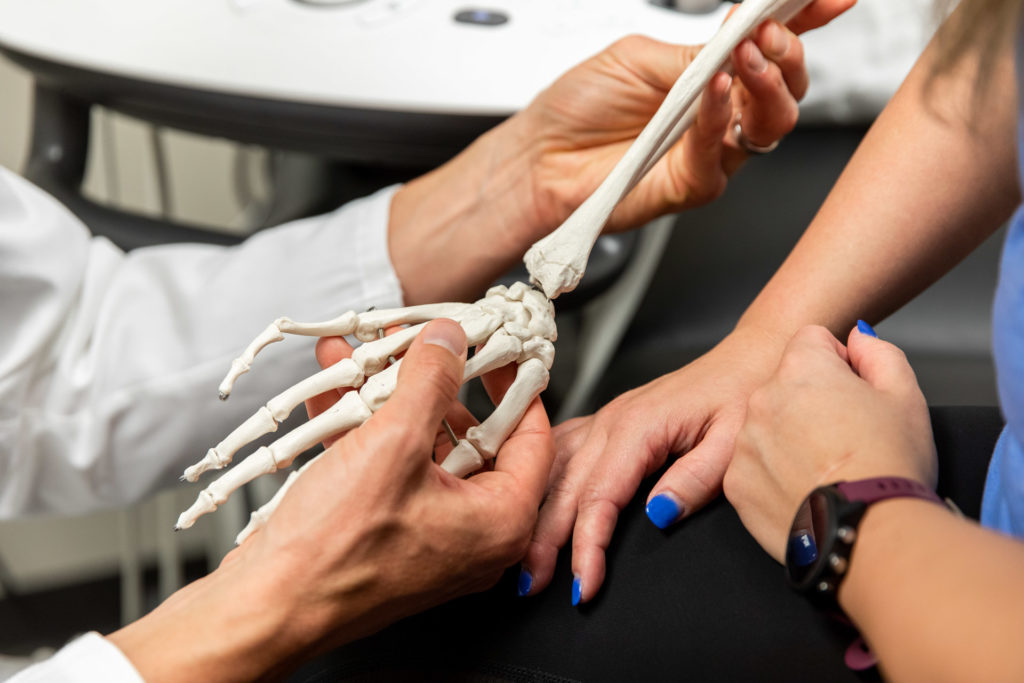
Carpal Tunnel Syndrome: Diagnosis & Treatment
What are the physical exam findings in carpal tunnel syndrome?
Certain physical exam tests may be positive with carpal tunnel syndrome. A positive Phalen sign is the onset of numbness when the wrists are placed into full flexion. A positive Tinel sign is the reproduction of numbness or an electric sensation into the fingers when the base of the palm is forcefully tapped. The most sensitive physical exam test for carpal tunnel syndrome is called the carpal compression test. A positive finding is the onset of numbness when pressure is held over the carpal canal at the base of the hand.
How is the diagnosis of carpal tunnel syndrome made?
Diagnosis is made primarily by the presence of classic symptoms and abnormal physical exam findings. Nerve studies, a test where electrical impulses are applied to the nerve through pads on the skin, can also be obtained and can help confirm the diagnosis of carpal tunnel syndrome, as well as help rule out other reasons for numbness in the hand.
What nonsurgical treatments are available for carpal tunnel syndrome?
Nonoperative treatment of patients with mild symptoms usually involves rest of the hand and arm, in order to avoid activities that may provoke further symptoms, as well as use of a wrist splint. Many patients whose symptoms occur primarily at night get significant improvement in their symptoms with a splint. If the onset of symptoms has been fairly recent, it is recommended to use the brace as much as possible for about four weeks. If the symptoms occur at night, the brace needs to be worn only at night.
The other nonoperative treatment is a cortisone injection to reduce the swelling and inflammation in the carpal tunnel, thereby reducing the compression on the nerve. A cortisone injection is most helpful if given within 3-4 months following the onset of symptoms. The ability to obtain long-term relief with a cortisone injection decreases with the length of time that the symptoms have been present.
When is carpal tunnel release surgery appropriate?
The indications for proceeding to surgical treatment are:
- Findings on the nerve study that indicate some damage to the nerve
- The presence of constant numbness or a sensation of abnormal feeling in one or more fingers at all times
- Failure of bracing or a cortisone injection to provide adequate relief of symptoms
Frequently, patients do not visit their doctor for evaluation or treatment until they have constant numbness. This is unfortunate, as this level of symptoms indicates that there may already be some damage to the nerve. Not surprisingly, research indicates that the results following carpal tunnel release surgery are better if the nerve has not been damaged.
Patients with carpal tunnel syndrome may have two types of numbness. Usually there are “hard” episodes of numbness that may occur at night, while driving, or doing other activities with the hands. These “hard” episodes normally get better or resolve very soon after surgery. Some patients also have what I would call a “baseline” numbness that is present all the time. It is difficult to predict how this symptom will respond to surgery. Most patients will notice improvement, and for some this baseline numbness will completely resolve. Other patients, because damage to the nerve may have occurred, will not recover normal sensation. In this group of patients, however, the “hard” episodes of numbness will normally resolve or significantly improve, and there is still value in the surgery as it will likely prevent further worsening of symptoms.


